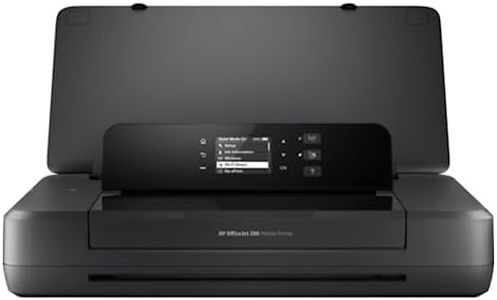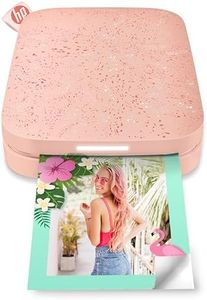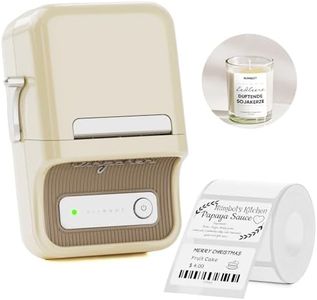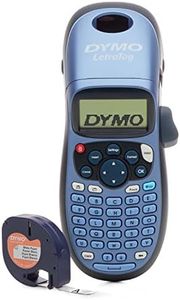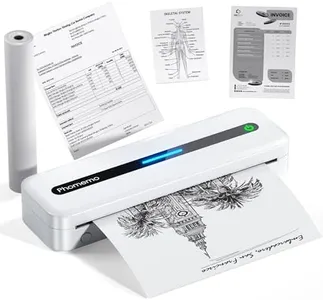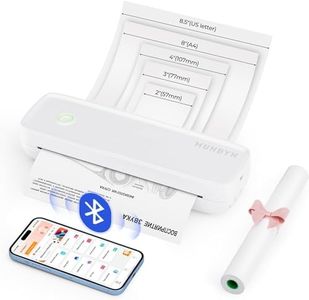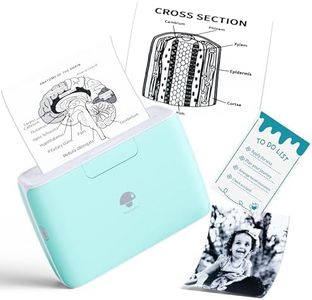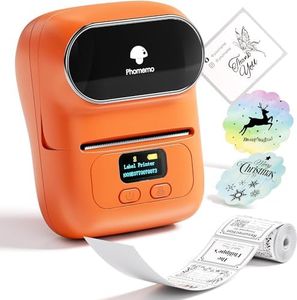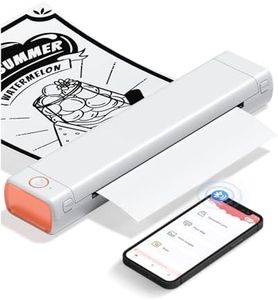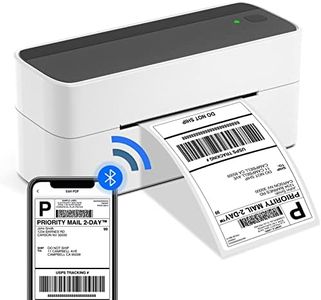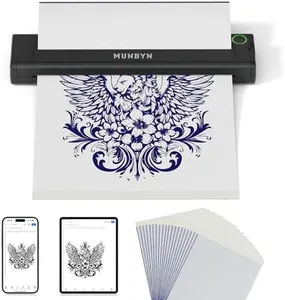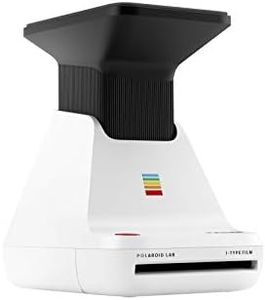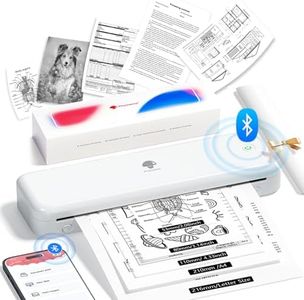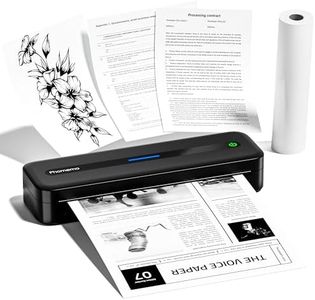We Use CookiesWe use cookies to enhance the security, performance,
functionality and for analytical and promotional activities. By continuing to browse this site you
are agreeing to our privacy policy
10 Best Portable Thermal Printers
From leading brands and best sellers available on the web.Buying Guide for the Best Portable Thermal Printers
Choosing the best portable thermal printer can make a big difference, whether you're printing receipts on the go, labels for packages, or quick documents without the need for ink or toner. The right printer for you depends on how, where, and how often you plan to use it. Before buying, think about your primary tasks—do you need to print just receipts, or do you want to print shipping labels, tickets, or even images? Also, consider the environments you'll be working in, such as indoor offices or out in the field, and how important size and battery life are for your needs.Print ResolutionPrint resolution refers to how clear and sharp the printed output will be, usually measured in dots per inch (DPI). A higher DPI means crisper text and better quality images, which is important if you need to print graphics or small text. Lower resolution (about 200 DPI) is often enough for basic receipts or simple text, while higher resolution (300 DPI or more) is ideal if you need images, barcodes, or more professional-looking prints. Think about whether clarity or just readability is most important for your tasks.
Print SpeedPrint speed is how fast the printer can produce your document or label, usually stated as millimeters per second or pages per minute. Faster print speeds may be necessary if you print lots of receipts or documents back-to-back, such as at events or in busy retail. Slower speeds are fine for occasional use or situations where you're not in a rush. Look for something in the mid-range if you want a balance between speed and device size.
Paper Width and TypeThermal printers work with specific sizes of thermal paper, usually listed as the paper width (such as 58mm or 80mm). Picking the right paper width ensures your printer meets your needs; smaller widths are common for receipts, while wider paper is used for labels and tickets. Check what kind of documents you'll be printing and make sure the printer and paper are a match—using the wrong type could lead to jams or poor quality printing.
Battery LifeBattery life determines how long you can use your printer before needing to recharge, and is especially important if you'll be working away from power sources for long periods. Short battery life may be fine for quick jobs near a plug, but if you're working all day or traveling, longer-lasting batteries (often measured in number of prints per charge) are better. Consider how long your work sessions last and how much you print in one go.
ConnectivityConnectivity options include Bluetooth, USB, Wi-Fi, and sometimes even NFC. Bluetooth is great for connecting to smartphones or tablets on the go, while USB can provide stable connections to laptops. Wi-Fi is helpful for printing from multiple devices or in small office setups. Decide which devices you’ll be printing from and make sure the printer supports easy connection to them.
Supported Operating SystemsNot all portable thermal printers work with all operating systems. Some are optimized for Android or iOS mobile devices, while others work better with Windows or Mac computers. Before buying, check that the printer has drivers or apps that support your phone, tablet, or laptop. Choosing one that matches your primary device ensures smooth use and fewer headaches with compatibility.
Durability and PortabilitySince portable printers are meant to be moved around, their build quality and weight matter. Durable printers with shock-proof or water-resistant features are ideal for outdoor or rougher environments. Lighter and more compact models are easier to carry but may have smaller batteries or fewer features. If you’re always on the move or working outside, prioritize durability along with portability.
